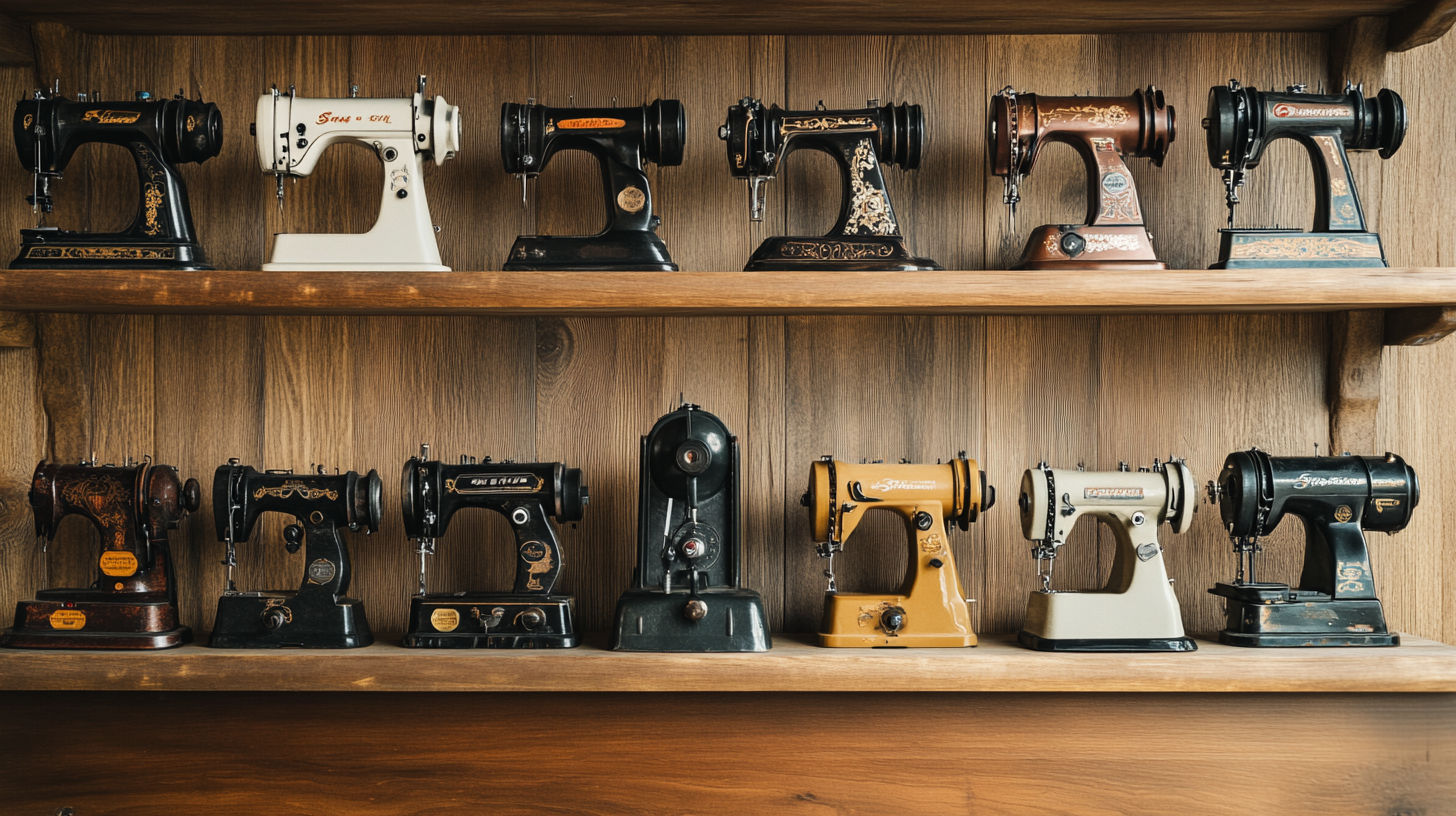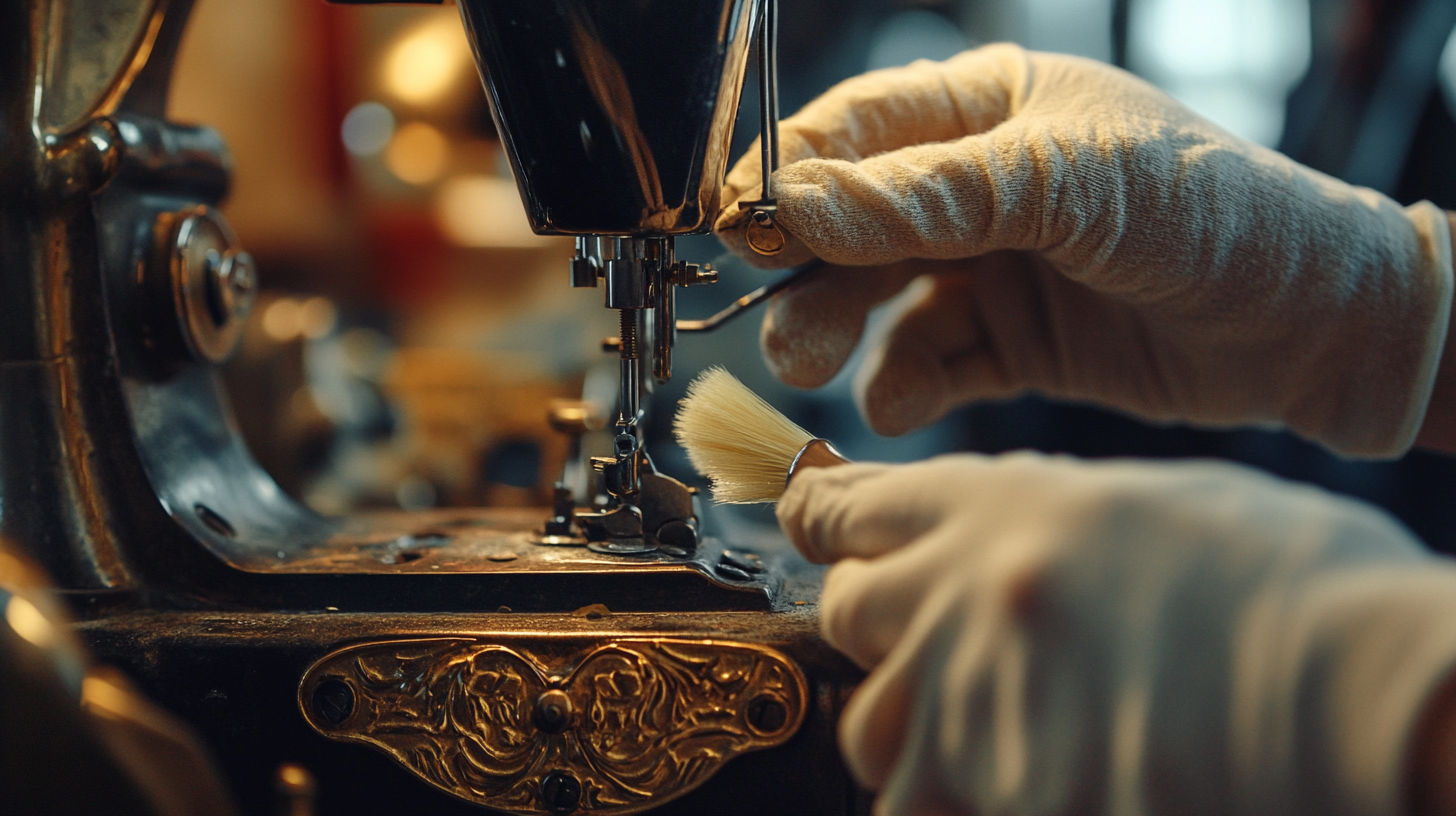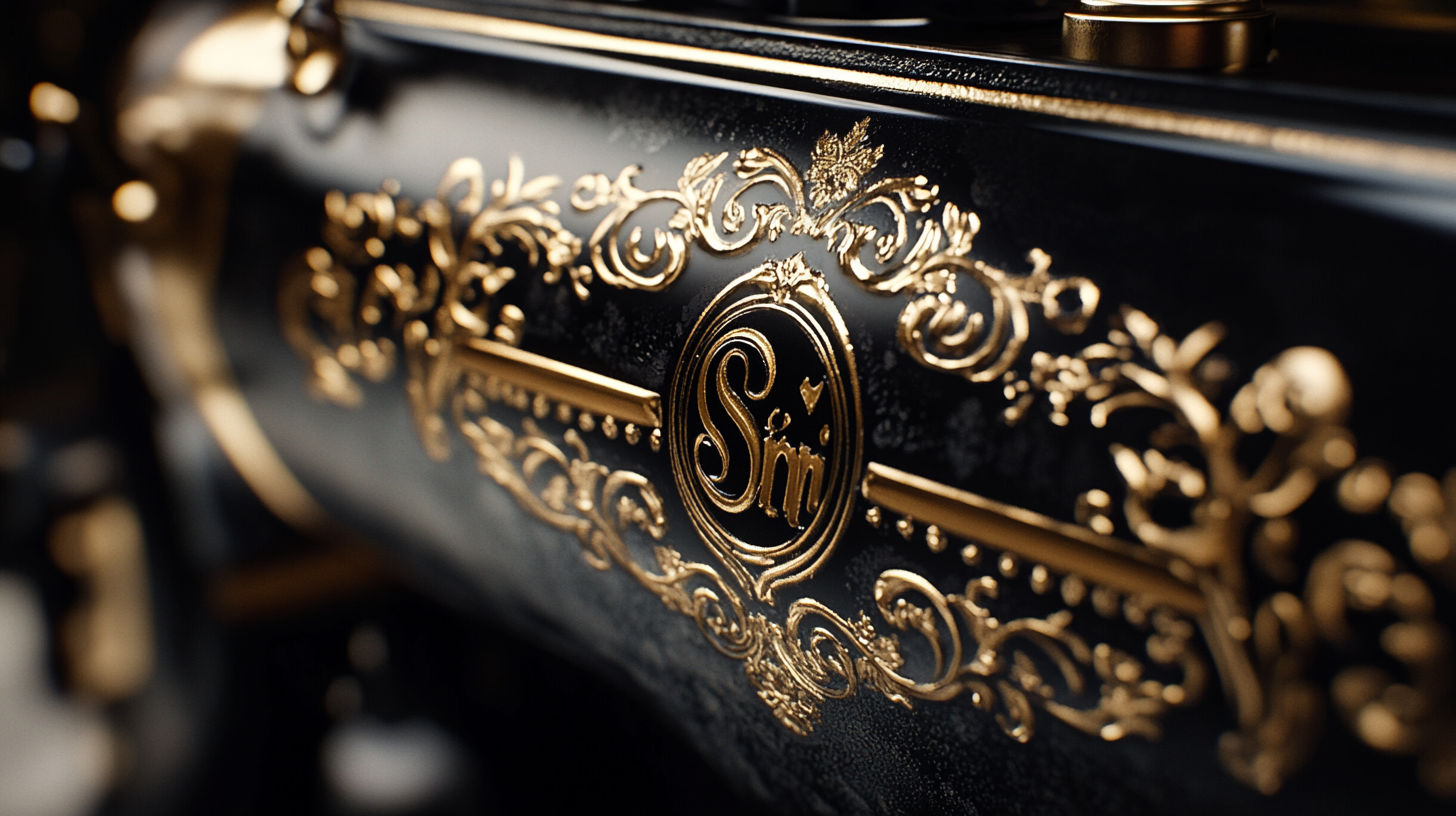Introduction to Antique Singer Sewing Machine Values
Singer sewing machines have been household staples since their introduction in the 1850s. Today, these vintage machines have become sought-after collectibles, with some rare models commanding impressive prices. Whether you’ve inherited an old Singer or discovered one at an estate sale, understanding its value requires knowledge of its model, age, condition, and current market demand.
This comprehensive guide will help you determine the value of your antique Singer sewing machine, identify the most collectible models, and provide resources for appraisal and selling options.
The Singer Legacy: A Brief History
Isaac Merritt Singer founded the I.M. Singer & Company in 1851, revolutionizing home sewing with machines that were more practical and accessible than earlier designs. The company quickly grew to dominate the global sewing machine market, producing millions of machines across dozens of models.
Singer Sewing Machine Historical Timeline
- 1851
Singer Company Founded
Isaac Merritt Singer establishes I.M. Singer & Company, introducing innovations that make sewing machines more practical for home use. - 1856
First Family Machine
Singer introduces the first successful "Family" sewing machine, making home sewing more accessible. - 1889
Singer Model 66 Introduced
The iconic Model 66 is released, becoming one of the most successful sewing machines ever made, with production continuing into the 1950s. - 1933
Featherweight 221 Debuts
The lightweight, portable Featherweight model is introduced, becoming one of the most collectible Singer machines today. - 1950s-60s
Transition to Modern Machines
Singer begins the shift from all-metal construction to incorporating plastic components, marking the end of the "vintage" era.
Identifying Your Singer Sewing Machine
Finding the Serial Number
Every Singer sewing machine has a unique serial number that can tell you both the model and when it was manufactured. The location varies by model:
- On treadle machines and early electric models, look for the serial number on the front of the machine, often on a small plate
- On later models, check the bottom or back of the machine
- Some models have the serial number stamped on the motor or light assembly
Once you’ve located the serial number, you can use the Singer Serial Number Database from the International Sewing Machine Collectors’ Society (ISMACS) to determine your machine’s manufacturing date.
Common Vintage Singer Models
Understanding which model you have is crucial for determining value:
Most Collectible Singer Models
- Singer Model 66: First introduced in 1900, known for its “Red Eye” decals
- Singer Model 99: A 3/4-size version of the Model 66, popular for its portability
- Singer Model 221 (Featherweight): Highly collectible portable machine from 1933
- Singer Model 201: Known as Singer’s finest straight-stitch machine
- Singer Model 15: Long production run with numerous variants from 1895 onward
- Singer Treadle Machines: Various models mounted in cast-iron stands with foot pedal operation
Factors Affecting Vintage Singer Value
Model and Rarity
Some Singer models are inherently more valuable than others due to their rarity, design features, or collector demand:
- The Singer Featherweight 221 is among the most collectible, particularly the rare black models
- Specialty models like the Singer 222K (free-arm Featherweight) command premium prices
- Machines with unique decal patterns or limited production runs can be worth more
- Early models from the 1850s-1870s with hand-crank mechanisms are valuable for their historical significance
Condition Assessment
Condition is perhaps the most significant factor in determining value:
Singer Sewing Machine Condition Checklist
Use this checklist to assess your machine's condition
- Machine runs smoothly when hand wheel is turned
- Motor runs properly (for electric models)
- Original decals are intact and not significantly worn
- No significant rust or damage to the metal components
- Wooden cabinet or case is in good condition (if applicable)
- Original attachments and accessories are present
- Has original manual and paperwork
Completeness
A machine with all its original parts and accessories will be worth significantly more than one with missing components:
- Original foot controller
- Bobbin case and bobbins
- Presser feet and attachments
- Original case or cabinet
- Instruction manual and paperwork
- Original belt (for belt-driven models)
Originality and Restoration
Generally, collectors prefer machines in original condition with minimal restoration:
- Light cleaning and careful oiling are acceptable and often necessary
- Full restoration with non-original parts or repainting can decrease value
- Original decals are highly desirable; machines with intact, vibrant decals command premium prices
- For wooden cabinets, gentle restoration that preserves the original finish is preferred

Most Valuable Singer Sewing Machines
Singer Featherweight (Model 221)
The Singer Featherweight is the crown jewel of Singer collectors:
- Standard models in excellent condition: $400-$800
- Rare black models: $900-$2,000
- Models with original case and accessories: Add $100-$300 to base value
- Centennial edition (1951): $600-$1,000
Singer Model 66 “Red Eye”
The Model 66 with distinctive “Red Eye” decals is highly sought after:
- Early models (1900-1920) in excellent condition: $300-$700
- With original treadle cabinet: $400-$900
- Later electric models: $150-$300
Singer Model 201
Often called Singer’s finest domestic sewing machine:
- Early models in excellent condition: $250-$500
- In original art deco cabinet: $500-$900
Rare and Specialty Models
Some specialty Singer machines command exceptional prices:
- Singer 222K Free-Arm Featherweight: $1,500-$4,000
- Pre-1900 Models with hand crank: $300-$1,000
- Rare industrial models: $500-$2,000
- Singer “Turtleback” (1870s): $1,000-$3,000
Vintage Singer Sewing Machine Price Ranges
Current market values based on recent sales (2024)
</tbody>
</table>

Common Yet Still Valuable Singer Models
1950s-1960s Models
Many homes still have Singer machines from the 1950s and 1960s. While not as valuable as earlier models, they still hold appeal:
- Standard electric models from this era: $50-$200
- Machines in original cabinets: Add $50-$150 to base value
- Models with zigzag or other special features: $100-$300
Treadle Machines
Singer treadle machines, powered by a foot pedal that drives a large wheel, remain popular for both collectors and practical users:
- Complete treadle machines in working order: $200-$600
- Machines with ornate cast iron stands: Add $100-$200
- Early models with rare decals: $300-$700
Singer Model 15
The Model 15 had one of the longest production runs of any Singer model:
- Early versions (pre-1950): $150-$300
- Later electric versions: $75-$200
- Rare variations or special editions: $300-$500
How to Research Your Singer's Value
Online Resources
Several online resources can help you determine the value of your Singer sewing machine:
- Recently completed eBay auctions: Search for your specific model and filter by “sold items” to see actual selling prices
- Singer collectors’ forums: Websites like The Quilting Board have dedicated vintage machine sections
- International Sewing Machine Collectors’ Society: The ISMACS website offers valuable resources for identification and valuation
- Singer’s official resources: Singer maintains information about vintage machine value
Professional Appraisal Options
For particularly rare or valuable machines, consider professional appraisal:
- Antique dealers specializing in sewing machines
- Online appraisal services like Mearto
- Auction houses for high-value models
- Local sewing machine repair shops often have expertise in vintage models
Selling Your Vintage Singer
If you’re looking to sell your machine, consider these options:
- Online marketplaces: eBay, Etsy, and Facebook Marketplace are popular for vintage machines
- Specialty collectors’ groups: Finding dedicated Singer collectors may yield better prices
- Antique shops: Some will purchase machines outright or sell on consignment
- Auction houses: For rare, high-value models
External Singer Sewing Machine Resources
Singer Serial Number Database
Search this comprehensive database from the International Sewing Machine Collectors' Society to determine the manufacturing date of your Singer machine by serial number.
Singer's Official Value Guide
Singer's own guide to determining the value of vintage and antique Singer sewing machines, with tips on assessment and marketplace trends.
Mearto Singer Appraisals
Professional online appraisal service for Singer sewing machines, providing expert valuations based on your machine's model, condition, and features.
eBay Collectible Singer Machines
Browse current listings and recently sold items to gauge the current market value of similar Singer machines to yours.
The Quilting Board
Active forum with a dedicated section for vintage sewing machine enthusiasts, offering identification help and valuation advice from experienced collectors.
Singer Featherweight Shop
Specialized resource for Singer Featherweight owners, offering parts, accessories, and valuable information about these highly collectible machines.
Restoring vs. Preserving: Impact on Value
Preservation Guidelines
For machines with collector value, preservation is often preferable to restoration:
- Clean gently with appropriate products that won’t damage decals or finishes
- Lubricate moving parts with proper sewing machine oil
- Remove surface rust carefully without damaging the underlying metal
- Avoid harsh chemicals that could damage original finishes
- Preserve original decals rather than attempting to repaint or replace them
When Restoration Makes Sense
In some cases, careful restoration can improve value:
- Non-working machines may benefit from mechanical restoration to working condition
- Heavily damaged wooden cabinets might need professional restoration
- Missing parts that affect functionality can be replaced
- For common models intended for use rather than collection, full restoration may be appropriate
DIY vs. Professional Restoration
Consider the following when deciding between DIY and professional restoration:
- DIY cleaning and basic maintenance is suitable for most machines
- Professional restoration is recommended for rare or valuable models
- Incorrect restoration techniques can permanently damage value
- Documentation of any restoration work should be maintained
Frequently Asked Questions About Vintage Singer Sewing Machine Values
How do I find the serial number on my Singer sewing machine?
The serial number location varies by model, but common places to look include:
- On a small plate on the front of the machine
- Stamped into the bottom or back of the machine body
- On the motor or light assembly (for electric models)
- Inside the wooden case or cabinet
Once you find the serial number, you can use the ISMACS Singer Serial Number Database to determine when and where your machine was manufactured.
What is the most valuable Singer sewing machine?
The most valuable Singer sewing machines include:
- The Singer 222K Free-Arm Featherweight, which can sell for $1,500-$4,000 due to its rarity
- Rare black Singer Featherweight 221 models in excellent condition with original case and accessories ($900-$2,000)
- The Singer "Turtleback" from the 1870s ($1,000-$3,000)
- Pre-1900 models with unusual features or in exceptional condition
However, extraordinary examples with documented provenance, such as machines owned by celebrities or with historical significance, can command even higher prices at specialized auctions.
Are Singer sewing machines from the 1950s and 1960s worth anything?
Yes, Singer machines from the 1950s and 1960s typically have values ranging from $50 to $300, depending on:
- The specific model and its features
- Overall condition and working status
- Completeness with original accessories
- Whether it comes with the original cabinet or case
While not as valuable as earlier models, these machines are often still practical for sewing and represent the transition between vintage all-metal construction and modern plastic components.
How can I tell if my Singer is a rare or valuable model?
To identify potentially rare or valuable Singer models:
- Look up the serial number to determine the model and manufacturing date
- Research specific features like unusual decals, rare color variants, or special editions
- Check for models known to be valuable (like the Featherweight 221, Model 66 "Red Eye," or pre-1900 models)
- Assess the overall condition, as even common models in pristine condition can be valuable
- Look for complete original accessories, case, and documentation
Consulting with collectors’ forums or getting a professional appraisal is recommended for potentially valuable machines.
Does restoring my Singer sewing machine increase or decrease its value?
The impact of restoration depends on several factors:Value-Decreasing Restoration:
- Repainting original decals
- Using incorrect replacement parts
- Refinishing wooden cabinets with modern techniques
- Over-cleaning that removes original patina
Value-Preserving or Increasing Restoration:
- Careful cleaning and lubrication
- Professional mechanical repairs that restore functionality
- Gentle removal of rust or corrosion
- Appropriate cabinet restoration that preserves original character
For collectible machines, minimal intervention is generally preferred. For common models intended for use, restoration to working condition is more acceptable.
What's the value of a Singer sewing machine in a wooden cabinet?
Singer machines in their original wooden cabinets typically have a value premium of $50-$300 above the base machine value, depending on:
- The cabinet style and design (art deco cabinets from the 1930s-40s are particularly desirable)
- Condition of the wood and finish
- Functionality of cabinet features (drawers, folding mechanisms, etc.)
- Completeness of both the cabinet and machine
Treadle machines in ornate cast iron stands can command $200-$600 or more when complete and in good working order.
Where is the best place to sell a vintage Singer sewing machine?
The best selling venues depend on your machine's value and your goals:
- eBay or Etsy: Good for most vintage machines, especially those worth $100-$500
- Specialty collectors’ forums: Ideal for rare or valuable models worth $500+
- Facebook Marketplace or Craigslist: Best for lower-value machines or those too heavy to ship
- Auction houses: For extremely rare or valuable machines worth $1,000+
- Consignment shops: Good middle-ground option with less effort but lower returns
Research completed sales of similar machines before listing to set realistic expectations about value and selling timeframe.
How important are original accessories to a Singer sewing machine's value?
Original accessories can significantly increase a vintage Singer's value:
- Complete set of original attachments: Can add 20-40% to base value
- Original manual and documentation: Can add 10-25% to base value
- Original case or wooden cabinet: Can add 30-100% to base value
- Original bobbins, needle plates, and feet: Can add 10-20% to base value
Particularly for Featherweight models and other collector favorites, complete original accessories can sometimes double the value compared to the machine alone.
Conclusion: Preserving Singer’s Legacy
Vintage Singer sewing machines represent an important chapter in manufacturing and domestic history. Whether you’re looking to determine the value of an inherited machine, considering a purchase, or building a collection, understanding the factors that influence value will help you make informed decisions.
Remember that beyond monetary value, these machines carry historical and sentimental significance. Many vintage Singers remain fully functional a century or more after manufacture—a testament to their exceptional build quality and timeless design.
For those who own vintage Singer machines, proper care and maintenance will help preserve both their functionality and value for future generations. Whether displayed as a decorative antique or still producing beautiful stitches, these machines continue to be appreciated for their craftsmanship, durability, and the role they played in countless households throughout history.
Whether your vintage Singer is worth $100 or several thousand, it represents an enduring legacy of innovation and quality that few modern products can match.
Get a Professional Appraisal
Unsure about your item’s value? Our certified experts provide fast, written appraisals you can trust.
- Expert report with photos and comps
- Fast turnaround
- Fixed, upfront pricing
No obligation. Secure upload.
| Category | Price | Notes |
|---|---|---|
| Singer Featherweight 221 (Standard) | $400-$800 | Excellent condition with case |
| Singer Featherweight 221 (Black) | $900-$2,000 | Rare color variation |
| Singer Model 66 "Red Eye" | $300-$700 | Early models with intact decals |
| Singer Model 201 | $250-$500 | Known as Singer's finest straight-stitch |
| Singer Treadle Machines | $200-$600 | Complete with original table |
| Singer 222K Free-Arm Featherweight | $1,500-$4,000 | Rare and highly sought after |
| Standard 1950s-60s Models | $50-$200 | Common models in working condition |
| Pre-1900 Hand Crank Models | $300-$1,000 | Depending on rarity and condition |




